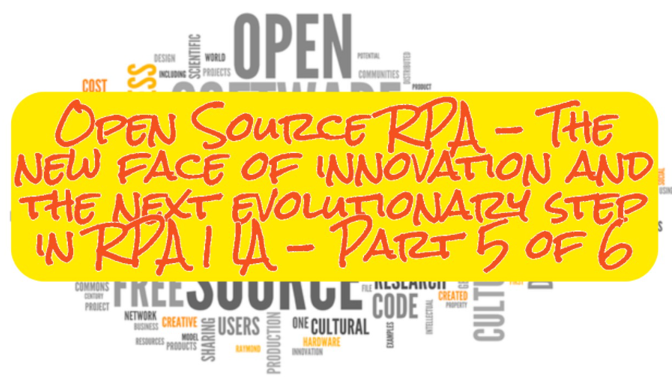Discover how to future proof your Intelligent Automation Centre of Expertise | 30 Experts Guide to Happy Ever After – Part 2
Business transformation requires organizations to establish Centres of Excellence (CoE) to deliver and support critical business capabilities. A Centre of Excellence (CoE) is a team of skilled knowledge workers whose mission is to provide the organization they work for with best practices around a particular area of interest. Part 1 of our expert series looked What does a Centre of Excellence do? Today we look at the pros and cons of alternate CoE models.
“Automation Programmes across enterprises succeed only when a CoE acts as an enabler function and not as that “dreaded” entity that possesses greater powers over the rest of the mortals in an organisation. A CoE can truly help champion the Automation Objectives, only if it acts as a “Catalyst of Excellence” or “Community of Excellence”, and inculcates an Automation culture across all levels, making sure that the building blocks and the necessary framework for Automation is available to the masses.”
Swapnil Pitale, Automation Practitioner
Alternate COE models: There are a variety of ways to setup an automation Centre of Excellence. Each has advantages and disadvantages. Organisations must choose which model best fits their operations. The option chosen is not fixed as it can change over time.

Figure 1: Federated (aka decentralised or functional), Hybrid and Centralised CoE Models
Decentralized CoE or CoE as a support function (functional) where business units can run their own CoE’s to deploy automations.
- Advantages: CoE functionalities can be spread across an organization with different CoE capabilities being run by different business units This approach allows local business teams to get up to speed quickly, empower innovation among employees, and in parallel help them gain expertise.
- Disadvantages: A lack of proper architecture review, security issues, missing compliance elements, skipped integration (API) opportunities, and IT infrastructure problems may create severe issues, slow down the initiative, reduce its potential, and as a result prevent it scaling up and succeeding. This model hands the demand for innovation over to the employees by empowering them to meet business goals by using IA | RPA which does not always work. Standards can become fragmented and difficult to impose. An unnecessary duplication of tools, infrastructure and resources may arise.
This model is loosely-governed, and different lines of business establish their own CoE guidelines and structures. While this a great way to start an IA | RPA initiative and could potentially cost less, it is difficult to scale and liaise with IT as there is no central control.
Centralized CoE where central CoE provides resources and expertise required to deliver IA | RPA implementation successfully. All the capabilities required to meet business demands and facilitate IA | RPA distribution throughout the organization will be handled by a centralized automation CoE setup The CoE provides the collective resources and expertise required to deliver the IA | RPA implementation successfully – this enables those in charge to view all initiatives in a centralized place and gives them stronger governance abilities over projects and priorities. This model is usually implemented where an organisation is already working n a centralised way with synergies across functions.
- Advantages: Low cost, automations can be delivered across the enterprise using a central, standard capability and solution. A centralized CoE setup provides an end-to-end view of process changes, enabling more beneficial opportunity identification. A central model also provides a standard set of regulations for assessment, delivery, monitoring, compliance, architecture, best practices and maintenance. All the above features make scaling easier.
- Disadvantages: Potential issues are related to process understanding, costly business analysis, and project management. Engagement from lines of business, geographies and functions can be more difficult to obtain as functional areas may feel a lack or loss of control over the program. Capability and capacity can become constrained and become a resource bottleneck.
Hybrid CoE Most organizations use a hybrid of the above two options. A hybrid model is best suited for mature initiatives that can accommodate features of both centralized and decentralized models. For example, a well-established CoE should be mature enough to handle decentralized business unit demands while still having centralized operations.
- Advantages: AI | RPA capabilities can be built within functions close to the business. Business units can enjoy local ownership and responsibility whilst a central CoE provides oversight and governance expertise. A hybrid model can help enable scalability across lines of business, geographies and functions with a single central, shared platform available for all.
- Disadvantages: A hybrid model requires strong governance to ensure consistent standards and methods are followed. Implementing common ways of working and standard processes or change management requires discipline scalability across lines of business, geographies and functions and that is not always the case.
In this scenario, the CoE delivery and operational support. At the same time, each business unit will have its parameters for development, prioritization, and assessment of automation processes. where decentralized business units are responsible for creation of automations and prioritization, and centralized function works on governance, infrastructure, architecture, and operational support.
“When we choose a COE model it’s worth considering a number of factors such as the size of the organization, industry, level of automation maturity, and global presence. Normally, large organizations would struggle to run a central COE as it may slow things down. This is a fast-growing area that can’t tolerate delays and must be cost-efficient.
I’d recommend operating in a Hybrid model, especially for large companies. It helps to resolve certain problems once and for all, and also to negotiate commercials with vendors centrally leaving the execution of projects to local teams.
However, independently on the COE model, it’s paramount to build the foundation right. Any Automation Leader should create an environment that is robust and ready for scale. Otherwise, it’ll be extremely difficult to drive the automation agenda long term, due to continuous production challenges that will distract the entire team from delivering new things.”
Alexander Park, Head of Smart Automation
Automation is not an overnight success story. Whilst significant returns can be achieved within 12 months, automation and digital transformation is a long-term play. It is crucial to have the big picture in mind, but take small steps to begin (i.e. start small, think big, scale fast).
“Remember that automation and digitisation is a long term game. Therefore dedicate time and money to maintain the solutions an organisation develops and become reliant upon. You can buy a lemonade from a kid hustling on the streets but in order for that kid to sustain revenue it would need a constant flow of customers in order to buy resources and to become more efficient at their business.
You need to dedicate that same money and time consistently to achieve great results. Now I know that seems pretty obvious but you’ll be surprised how much money companies throw away on a relevant business ‘trends’ for a short period of time and wondered why they even tried in the first place. You have to truly believe and research on your own internal initiatives to ensure that you can sustainability keep them. Otherwise your company will collapse if it’s built on a bunch of rolled up blueprints. Utilise what you have created and build up from there.”
Jessica Levett, Scrum mater and Architect
Although overlooked and underestimated, CoEs are a critical part of building a robust IA | RPA program. An IA | RPA CoE has a wide range of benefits that can vastly improve business capabilities but creating an automation CoE that matches your goals entirely is no easy task. A well-formed IA | RPA Centre of Excellence can help organizations manage the full cycle of IA | RPA, right from developing business use cases to supporting a vast bot ecosystem.
“The decision to implement RPA is typically made like any other investment decision. ROI is the key driver for executives who are looking to automate existing workflows with robots. In order to maximize ROI the automation centre is required to analyse what processes, platforms and deliverable make sense. Large enterprise companies typically choose to setup an automation centre as a permanent apparatus in the business, however mid-market companies are looking leverage an existing automation centre and limit their initial investment to deliver some quick wins”
Jackson Ostler, Dental-school dropout turned RPA enthusiast
COEs are designed to drive innovation and improvement. They also create a structure that encourages the different members of the organisation to measure, experiment, and push it forward. By promoting more transparency and more shared results, CoEs can be a powerful way for an organization to align around business goals, rather than individual departmental metrics. An IA | RPA CoE that does not allow you to better your service towards customers or clients is not fulfilling its potential; nor is one that ignores its employees experience in the process of transforming. With the right automation CoE tools, team and methods, a business can open itself up to new opportunities to interact with customers, close more deals and make more money using automation and digital technology. If that isn’t something worth aiming for then nothing is.
“Vendors please note that customers could not care less about what you call it; they simply want automation to work.”
Kieran Gilmurray, Global Automation Lead
If you like this article then you may find these articles of use too.
- How to build a business case for Intelligent Automation and Robotic Process Automation
- If your RPA program is not making money then it has failed.
- i’ve-now-met-150-rpa-developers-20-signs-truly exceptional developer (Author)
- 30 ways to build a pipeline of processes suitable for Robotic Process Automation (RPA) and Intelligent Automation (IA)
- 8 questions to ask to ensure you select the ‘right’ processes to automate using RPA | IA.
- 14 rules for Robotic Process Automation (RPA) and Intelligent Automation (AI) success
- The A-Z of Robotic Process Automation, Intelligent Automation and Digital Transformation
- The biggest lie told to RPA customers – 50 robots equals success
- 40 essential selection criteria to choose an RPA platform
If this could benefit someone else tag them and share this.
Free to reuse: We are a community of RPA and Intelligent Automation experts with years of real world experience. We have stories to tell and the scars to show for it. We share our collective wisdom for free to simply provide as much value as we can to you. Therefore, if you want to post this article on your LinkedIn page then please feel free to do so. The more information we share within the RPA | IA community the more likely businesses are to succeed with this excellent technology.
Further Help: If I can help you in any way please do reach out.
Note: The views expressed above are our views and not those of my employer or the employers of the contributing experts.






Leave a Reply